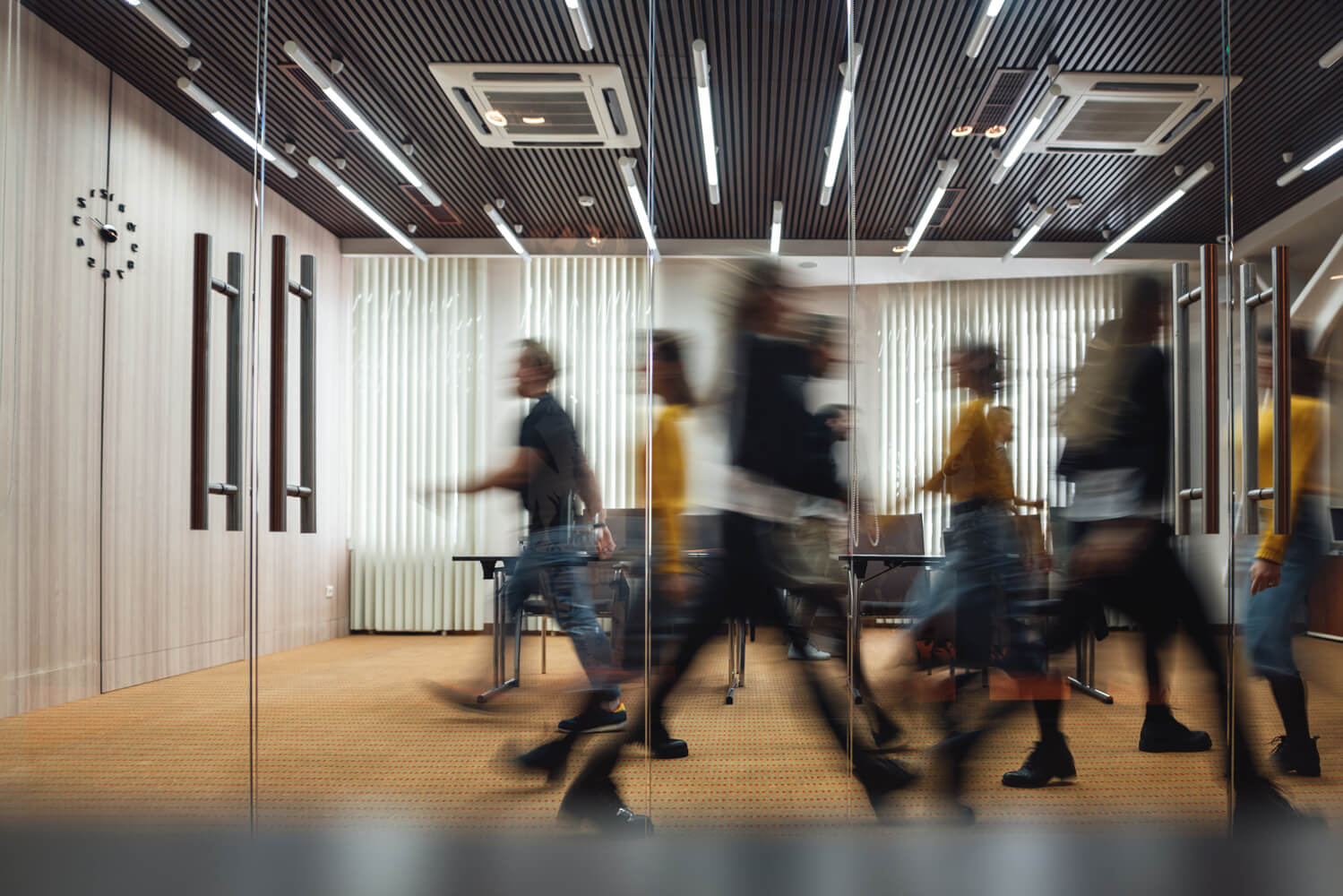Deter, Detect, Delay: Security Strategies for High-Traffic Areas


In today’s fast-paced world, security design for high-traffic areas like airports, shopping centers, and office complexes must do more than just safeguard property – it must protect people, foster a sense of safety, and seamlessly integrate into the environment. Guided by the core principles of deter, detect, and delay, security measures can transform from reactive barriers into proactive elements of a well-designed space. By thoughtfully implementing these strategies, designers can create environments that not only prevent incidents but also promote a secure and welcoming experience. This article explores how these principles apply to security design in high traffic areas, illustrating their relevance through electronic, physical, and manned systems.
Deter: Discouraging Threats with Purposeful Visibility
Deterrence is about making security a visible, reassuring presence. It’s not just about putting up barriers – it’s about sending a message. In high traffic areas, visible security measures discourage unwanted behavior before it even starts. For instance, physical barriers like security fences and bollards serve as a visible warning that access is restricted. Airports often use reinforced barriers to protect sensitive areas like the boarding gates, making it clear that unauthorized access is not only difficult but also highly noticeable.

Electronic deterrents such as surveillance cameras, paired with prominent signage, serve as an additional layer of psychological protection. Cameras act as a visual deterrent by signaling that activities are being monitored, thus reducing the likelihood of illicit behavior and boosting public confidence. Manned security, such as uniformed guards stationed at entry points, also contributes to deterrence by providing a physical presence that can dissuade potential offenders. The combination of these measures helps create an environment where the risk of getting caught outweighs the perceived benefits of committing a crime.
Detect: Rapid Response through Smart Systems
Detection involves identifying and recognizing security threats as they occur, enabling a swift response. In high traffic areas, effective detection strategies integrate both electronic and human elements to create a responsive security network. Motion sensors, alarm systems, and surveillance cameras equipped with advanced analytics, such as facial recognition and behavior analysis, further enhance detection capabilities by providing real-time alerts and actionable intelligence.

For instance, in a bustling shopping mall, a motion detector in an off-limit area or at a restricted entrance can immediately notify security teams of any unauthorized movement, allowing for prompt action. Additionally, manned security plays a vital role in detection. Trained security personnel conducting regular patrols and monitoring live camera feeds can quickly identify and assess potential threats. The combination ensures security breaches are detected early and accurately, allowing for a prompt and effective response.
Delay: Slowing Down Unauthorized Access
Delay focuses on creating barriers that slow down unauthorized access, providing valuable time for security personnel to respond in moments of need. Physical barriers are fundamental to this strategy. For instance, high-security gates and turnstiles at building entrances can impede unauthorized individuals, buying time for further verification or intervention. For corporate offices, access control systems such as keycard readers and biometric scanners prevent entry to restricted areas, forcing intruders to spend time attempting to bypass these systems.
Electronic measures like security alarms and lockdown procedures also play a crucial role in delay. When an alarm is triggered, security systems can initiate immediate lockdown procedures, restricting movement and providing additional time for a response team to address the situation. Manned security, such as guards stationed at key access points, can further enhance delay by physically intervening and managing the flow of people, ensuring that unauthorized individuals are contained or directed away from sensitive areas. These integrated delay tactics are essential in providing the time needed to address threats effectively, turning seconds into safety.
Future Evolution of Security Considerations
As technology continues to advance, the principles of deter, detect, and delay are evolving to meet the challenges in security design of modern spaces. The future of deterrence will likely see even more sophisticated electronic systems, including advanced AI-driven analytics that can predict potential threats based on behavior patterns. These technologies will enable proactive deterrence by identifying and addressing risks before they materialize. Detection methods will become more integrated, combining data from various sources such as IoT devices and smart sensors to provide a comprehensive view of security threats.
Enhanced machine learning algorithms will improve the accuracy of threat identification, reducing false alarms and increasing response efficiency. The delay principle will benefit from innovations in physical barriers and access control technologies, such as automated barriers that can swiftly adapt to different threat levels. Additionally, advancements in robotics and automation could provide new ways to manage and control access, further enhancing the ability to delay unauthorized entries.
Ultimately, the future of security design isn’t just about more technology – it’s about creating environments where people feel secure and supported, spaces that deter threats, detect issues promptly, and provide valuable time to respond when it matters most. By continuously refining these principles, security in high-traffic areas will become more resilient, helping to ensure that safety remains at the forefront without compromising the welcoming nature of our public and shared spaces.




View More Resources
Benefit from our expertise


